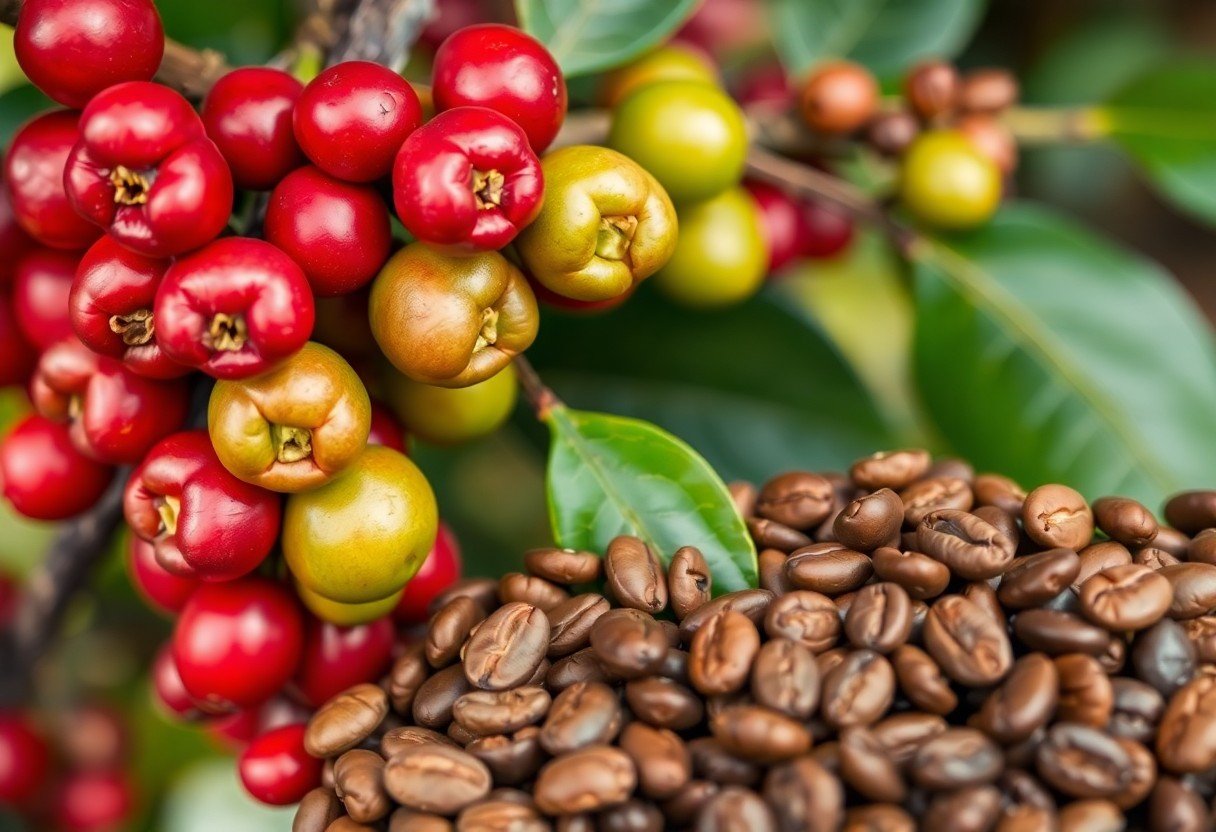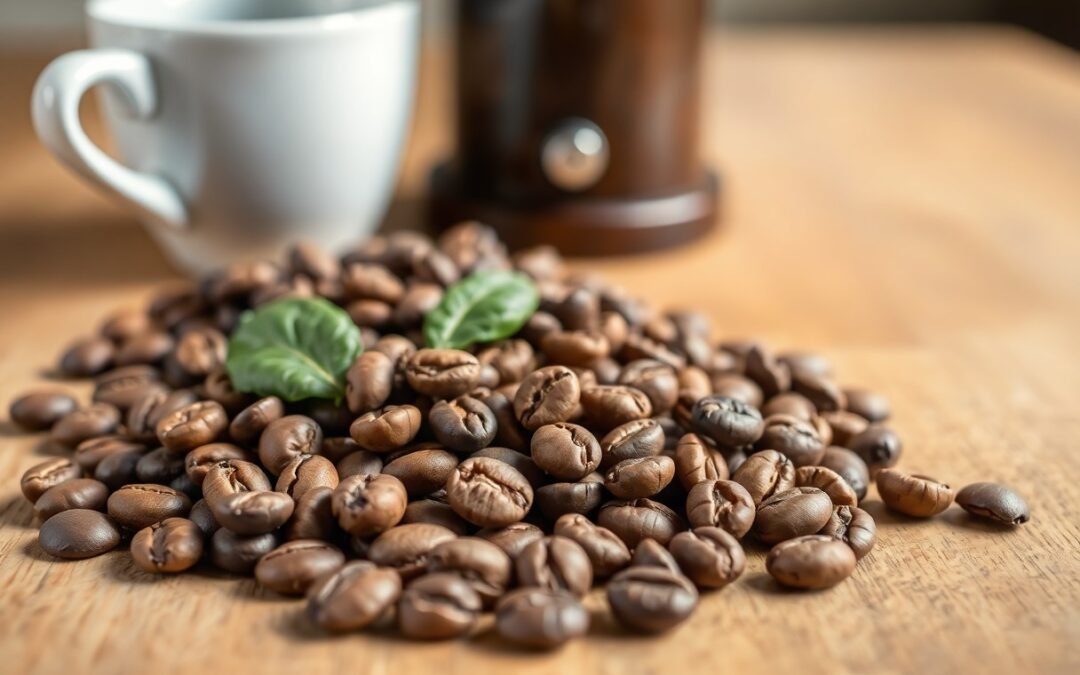You might be surprised to learn that coffee beans do indeed have a transitory lifespan that significantly affects their freshness and flavor. Understanding this lifespan can help you make informed choices about your coffee purchase and storage. As you explore into the world of coffee, it’s important to grasp how factors like roasting dates, storage conditions, and processing methods contribute to your beans’ overall quality over time. In this post, we’ll explore the lifecycle of coffee beans and discover how to enjoy the most flavorful brew from your daily cup.

The Lifecycle of Coffee Beans: A Deep Dive
The journey of coffee beans is a meticulous process that transforms the humble cherry into your favorite cup of joe. From cultivation to consumption, several stages play a pivotal role in determining the flavor, aroma, and overall quality of the brew you savor. Understanding this lifecycle not only enhances appreciation for your daily brew but also sheds light on the transitory nature of coffee freshness.
From Crop to Cup: The Journey of Coffee Beans
The Impact of Processing and Storage Methods
Freshness Defined: What It Means for Coffee Lovers
Freshness is a key factor that distinguishes an exceptional cup of coffee from an average one. For coffee lovers, freshness hinges on several aspects, including the age of the beans, their storage conditions, and how recently they were roasted. Beans that are consumed soon after roasting tend to exhibit vibrant flavors and aromatic complexities. You can gauge freshness by checking the roast date and ensuring that the beans are sealed properly after opening to preserve their quality.
The Chemistry of Freshness: Aromatics and Flavor Compounds
Once coffee beans are roasted, a myriad of chemical reactions begins, leading to the formation of aromatic compounds and flavor profiles. These compounds, including oils and acids, are vital for a coffee’s aroma and taste. Over time, exposure to light, air, and moisture degrades these delicate compounds, diminishing the coffee’s overall freshness. The unique interplay between these elements creates the rich sensory experience that you seek in every sip.
The Role of Roast Date and Grind Size
Your coffee’s flavor is significantly influenced by its roast date and grind size. Freshly roasted beans contain trapped carbon dioxide, which contributes to a more dynamic extraction process when brewed. As for grind size, it affects how quickly the water extracts flavors from the coffee during brewing. A coarser grind may result in under-extraction and a weak cup, while too fine a grind can lead to over-extraction and bitterness. Finding the right balance between roast date and grind size enhances freshness and ensures a flavorful brew tailored to your taste preferences.
Time as a Factor: How Longevity Affects Coffee Quality
Your coffee’s longevity directly impacts its quality, affecting the flavor profile and aroma you experience with each sip. As time passes, even the best beans lose their volatile oils and aromatic compounds, leading to a dull, flat cup rather than the radiant, vibrant brew you expect. The ideal consumption window for most roasts ranges from two weeks to a month after roasting, while ground coffee should generally be consumed within days. Understanding this timeline can transform your coffee ritual from mundane to extraordinary.
Decoding Shelf Life: Can You Really Taste the Difference?
The Myth of Stale Coffee: Truths and Misconceptions
Maximizing Freshness: Practical Tips for Coffee Enthusiasts
To enjoy the full sensory experience of coffee, fresh beans are non-negotiable. Enhancing your coffee’s freshness can be achieved with a few simple strategies:
- Store beans in an airtight container in a cool, dark place.
- Buy whole beans instead of pre-ground coffee.
- Purchase smaller quantities that you will consume within a few weeks.
- Invest in a quality grinder to enjoy the freshest brew.
The smallest adjustments in your coffee routine can significantly affect your overall experience.
Best Practices for Storage and Brewing
Keep your beans away from moisture, heat, and sunlight, as these factors play a detrimental role in flavor degradation. Using an opaque, airtight container can help shield your coffee from air exposure, which accelerates staleness. Brew methods that involve immediate consumption, like pour-over or French press, are ideal for savoring peak freshness.
The Importance of Purchasing Habits: How to Buy Coffee Smartly
Your purchasing habits greatly influence the quality and freshness of your coffee. Choosing reliable roasters who prioritize freshness allows you to enjoy coffee at its peak. Pay attention to roast dates; aim for beans roasted within the last few weeks for optimal flavor. Moreover, developing a relationship with a local roaster can provide insights into their sourcing and roasting process, ensuring that you are investing in quality coffee beans.
Smart purchasing means not just buying what’s readily available but being selective about where you source your coffee. Look for roasters that provide transparency in their supply chain and regularly sample small batches to guarantee consistent freshness. Building a connection with your chosen coffee supplier can lead to better recommendations and even sneak previews of upcoming roasts, putting you one step closer to the ideal cup.
The Future of Coffee Consumption: Trends and Innovations
Anticipating the future of coffee consumption reveals a landscape rich with trends and innovations that prioritize freshness alongside experience. Consumers increasingly seek unique flavors and ethically sourced beans, pushing the market for regional varieties and artisanal practices. This quest for freshness is not just about the beans but also includes investments in brewing technologies that showcase flavor characteristics, such as precision grinders and temperature-controlled brewers that bring out the best from every batch.
The Rise of Specialty Coffees and Freshness Obsession
As the specialty coffee movement gains momentum, your appreciation for quality and freshness deepens. Roasters are tapping into single-origin beans, time-sensitive coffee releases, and custom roasting profiles that promise optimal flavor at various stages of freshness. This obsession translates to personalized choices, where you can easily track the journey of your coffee from bean to cup, ensuring every sip reflects utmost detail and care.
Environmental Impacts: Sustainability vs. Freshness
A hotly debated topic in coffee consumption revolves around the balance between sustainability and freshness. On one hand, sustainable practices aim to preserve ecosystems and support farmers; on the other, fresh beans often require proximity to roasters for immediate consumption. Finding methods that allow for both eco-friendliness and maximum freshness is crucial for conscious coffee lovers.
Engaging in sustainable coffee practices doesn’t mean you have to forfeit freshness. Many companies are experimenting with direct trade models that shorten the supply chain, allowing you to enjoy freshly roasted coffee while ensuring that growers are compensated fairly. Innovations like nitrogen packaging or vacuum-sealed bags protect coffee from staleness, proving that it’s possible to honor the environment and your taste buds simultaneously. As consumers become more informed, your choices can directly affect not just the taste in your cup, but also the long-term health of the coffee industry.
To wrap up
On the whole, understanding the transitory lifespan of coffee beans can significantly impact your brewing experience. The freshness of your coffee is directly related to how long it has been since the beans were roasted. By choosing freshly roasted beans and consuming them within a few weeks, you can elevate your coffee experience, enhancing its aroma and flavor profile. Taking these factors into account ensures that every cup of coffee you brew delivers the vibrant taste you desire.
FAQ
Q: What is the lifespan of coffee beans once they are roasted?
A: Once coffee beans are roasted, they begin to lose their freshness relatively quickly. Typically, roasted coffee beans maintain optimal freshness for about two to four weeks after roasting. Their flavor and aromatic properties start to deteriorate after this period. However, if stored properly in an airtight container away from light, heat, and moisture, they can still retain usable quality for up to three months, although the flavor may not be as vibrant as within the first few weeks.
Q: How does the method of storage affect the freshness of coffee beans?
A: The method of storage plays a significant role in the freshness of coffee beans. Storing them in an airtight container, in a cool, dark place can help slow down the staling process. Exposure to air, light, moisture, and temperature fluctuations can accelerate the degradation of flavors and aromas. Vacuum-sealing or using specialized coffee storage containers can help extend their lifespan and maintain the beans’ intrinsic qualities for a longer duration.
Q: Does the type of coffee bean influence its freshness lifespan?
A: Yes, the type of coffee bean can influence its freshness lifespan. Different coffee varieties can have varying rates of staleness based on their oil content, processing methods, and roasting levels. For instance, darker roasts may have a slightly shorter freshness lifespan due to higher oil content that can become rancid more quickly. Meanwhile, lighter roasts may retain their flavor longer under the same conditions. Understanding these differences helps consumers choose and store their coffee beans more effectively to ensure the best possible taste experience.

